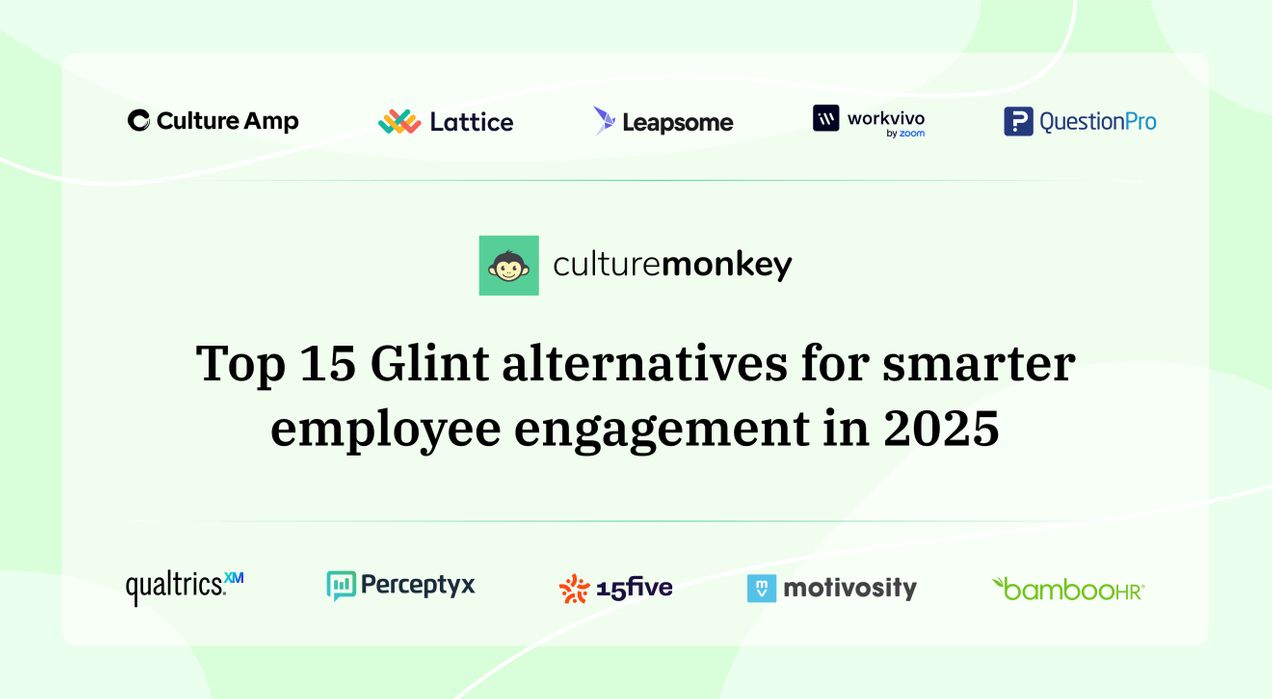20+ Best employee engagement activities in hospitals and healthcare teams in 2025

Think of a beehive. Every bee has a role, gathering nectar, guarding the hive, caring for the young. It’s a system built on trust, rhythm, and unspoken coordination. In hospitals and healthcare teams, the same quiet cooperation is key.
Doctors, nurses, technicians, and admin staff all keep the system running, often under pressure. But even the most efficient hive needs energy and renewal. That’s where engagement activities come in—they recharge the team, foster connection, and remind everyone they’re part of something meaningful.
Healthcare environments that prioritize well-being and morale aren’t just more resilient; they’re more human, more united, and ultimately, better for patients and providers alike.
TL;DR
Why is employee engagement in hospitals more critical than ever?

TL;DR
Engagement is no longer optional in hospitals — it’s a safeguard against burnout, disengagement, and declining care quality. As patient volumes rise and stress levels spike, emotionally connected teams stay resilient and deliver better outcomes.
Burnout today stems from emotional overload, not just hours. Engagement programs that include open communication, peer appreciation, and wellness support directly improve retention, patient trust, and hospital performance.
In today’s high-pressure hospital environments, engagement isn’t just a nice-to-have, it’s the difference between burnout and balance. The stakes are higher, the patient load heavier, and the expectations more intense than ever before.
An engaged workforce isn’t just happier; they deliver better outcomes, period, especially when there is open communication.
- Rising patient loads need emotionally available staff: Hospitals are experiencing record-high admissions, and while tech can help, it’s the people who carry the emotional burden. When staff feel connected and supported, they’re more resilient and capable of handling the increasing demands without disconnecting from patients or peers.
- Burnout isn’t slowing down, it’s evolving: Burnout in healthcare isn’t just about long hours anymore; it’s emotional fatigue, moral distress, and decision overload. Burnout prevention in healthcare starts with engagement programs that help staff feel heard, valued, and emotionally equipped to keep going.
- The link between employee satisfaction and patient outcomes: Studies consistently show that high hospital workforce satisfaction leads to safer care, fewer readmissions, and better overall patient experiences. Engaged teams are more attentive, collaborative, and committed, which directly impacts hospital performance metrics.
- Retention is cheaper than recruitment: Losing skilled nurses or techs costs more than we like to admit, in hiring, training, and patient care disruption. Engagement efforts aren’t fluff; they’re core hospital HR engagement strategies that protect your bottom line and institutional memory.
- Public perception and patient trust matter more than ever: Today’s patients do their homework. They look at staff reviews, satisfaction scores, and how hospitals treat their people. A visibly engaged, motivated team builds community trust and reinforces the hospital’s reputation for quality, not just care.
- Staff want more than just a paycheck: Healthcare professionals are prioritizing purpose, flexibility, and respect. Employee engagement activities in hospitals that reflect these values — like peer appreciation, wellness breaks, and team recognition — show staff they matter beyond their role.
Unique challenges healthcare workers face in maintaining engagement

Healthcare workers don’t operate in a vacuum. Their emotional, mental, and physical limits are constantly tested in high-stakes, high-stress settings. That’s why keeping engagement high isn’t just hard for the healthcare workforce, it’s a whole different ballgame in hospitals.
- Constant exposure to emotional trauma: Unlike most jobs, healthcare workers face trauma regularly patient loss, critical emergencies, and emotional family interactions. This takes a toll on morale and can lead to emotional detachment if hospital staff motivation ideas don’t address the human side of care.
- Lack of recovery time between shifts: Many nurses and clinical teams work back-to-back shifts with minimal time to decompress. When your brain’s always on high alert, even well-meaning employee engagement activities in hospitals can feel like extra work instead of support.
- Rotating schedules disrupt consistency: Engagement thrives on routine and community, both of which are hard to maintain with shift rotations, night duties, and weekend work. This makes it tricky to plan team building in hospitals that actually includes everyone, not just day staff.
- Hierarchical communication gaps: In some hospital settings, rigid structures can leave frontline staff feeling voiceless. Without consistent hospital pulse surveys or upward feedback loops, small issues snowball, eroding trust and making engagement efforts feel surface-level.
- Physical exhaustion and limited downtime: Healthcare is demanding, physically and emotionally. When every shift leaves your staff drained, the idea of attending extra sessions or engagement meetings can feel more like a chore than a reward, especially if not tailored to their needs.
- Under-recognition despite critical roles: Many roles, especially in support services, are often overlooked during recognition efforts. Hospital employee recognition needs to go beyond awards for physicians every role, from janitorial staff to lab techs, contributes to care and deserves acknowledgement.
Benefits of employee engagement in patient-facing roles

Engaged staff don’t just show up, they lean in, even during the toughest moments. For patient-facing roles, where empathy, precision, and endurance are non-negotiable, engagement can make all the difference. It's not just about job satisfaction, it's about exceptional patient care, too.
- Better bedside manner and patient trust: When staff feel supported and energized, that warmth translates to patient interactions. Patients notice the difference; they feel heard, respected, and cared for, which strengthens trust and improves health outcomes in measurable ways.
- Improved attention to detail under pressure: Engaged employees are more present, mentally and emotionally. This reduces errors, improves documentation, and ensures safer care, especially in high-pressure environments like ERs or ICUs, where focus can save lives.
- Reduced emotional fatigue and quicker recovery: Consistent engagement initiatives, like check-ins or peer shout-outs, help staff offload emotional strain. These subtle forms of burnout prevention in healthcare allow caregivers to bounce back between tough cases and maintain emotional clarity.
- Higher accountability and collaboration: Teams that are engaged tend to own their responsibilities and look out for one another. In patient-facing roles, this manifests as stronger coordination, quicker escalations, and fewer dropped balls, critical in fast-moving hospital units.
- Boosted morale in high-stakes situations: Hospitals run on adrenaline, but that can’t be the only fuel. Meaningful employee engagement activities in hospitals act as morale stabilizers, giving staff moments of connection, recognition, or humor to break the stress spiral.
- Stronger advocacy for patient needs: Engaged employees don’t just do the job; they go further. Whether it’s escalating a concern, fighting for a patient’s comfort, or improving care protocols, frontline healthcare engagement leads to a more compassionate, responsive care environment.
How does burnout and turnover impact hospital performance?

TL;DR
Burnout increases risks, from higher error rates to inconsistent care and lower patient satisfaction. It also weakens team coordination and drains morale across departments, impacting overall care delivery.
Meanwhile, turnover brings costly disruptions. Hiring and onboarding replacements strain HR and budgets, making prevention through engagement efforts far more sustainable than reactive recruitment cycles.
Burnout isn’t just a personal problem — it’s an organizational one that silently eats into performance.
When healthcare professionals are stretched thin or walking out the door, hospitals don’t just lose talent — they lose time, money, and patient trust. Here’s how the ripple effect plays out and contributes to organizational success.
- Increased medical errors and safety risks: Burned-out staff are more likely to miss details, skip steps, or delay decisions. In a hospital, that’s not just inefficient, it’s dangerous. Patient safety drops when focus and energy take a hit from emotional or physical fatigue.
- Soaring recruitment and onboarding costs: When turnover spikes, HR teams scramble to recruit, train, and onboard replacements. That’s expensive — not just in budgets, but in productivity. Hospital HR engagement strategies that reduce turnover are far more cost-effective than constant hiring cycles.
- Disrupted team dynamics and patient care: High turnover fractures team trust and consistency. New staff take time to adjust, which can slow coordination and create friction, especially where team building in hospitals hasn’t been prioritized as a part of the positive work culture.
- Lower patient satisfaction scores: Patients notice when care feels rushed, inconsistent, or disjointed, and they reflect it in satisfaction surveys. Burnout leads to emotional disengagement, which directly impacts how patients feel about their experience and whether they return.
- Declining morale across departments: Burnout is contagious. When one unit is chronically short-staffed or under-supported, neighboring teams feel the pressure too. Engagement drops across the board, creating a morale slump that’s hard to lift without meaningful interventions.
20+ Impactful employee engagement activities for hospitals

Not all engagement activities are created equal, especially in hospitals. The best recognition initiatives are flexible, inclusive, low-disruption, and designed with real clinical challenges in mind.
Here's a list of 20+ ideas that bring energy, connection, and compassion back to the hospital floor.
- Peer-to-peer shout-out boards: Encourage frontline healthcare engagement by letting staff recognize each other’s contributions. A simple “thank you” wall in the breakroom goes a long way.
- Wellness carts during peak hours: Stocked with snacks, water, and stress balls, these mobile carts offer a quick morale boost during hectic shifts.
- Micro-break meditation zones: Create quiet corners where staff can decompress for 5 minutes. It supports burnout prevention in healthcare without requiring time off.
- Hospital-wide scavenger hunts: An interactive and fun way to spark movement and team building in hospitals across departments.
- “Coffee with Leadership” rounds: Facilitate casual chats between staff and hospital leadership to foster transparency and hospital workforce satisfaction.
- Monthly themed appreciation days: From “Super Scrub Tech Day” to “Radiology Rocks,” rotate recognition themes to keep things fun and inclusive.
- On-the-spot recognition tokens: Let managers hand out tokens for small wins. Staff can redeem them for perks like a free coffee or extra break time, part of a thoughtful hospital employee recognition strategy.
- Mobile DEI story wall: Encourage inclusion with a rotating digital board where team members can share personal experiences, a subtle but impactful way to promote DEI in healthcare teams.
- Anonymous idea boxes (physical or digital): Let staff share improvement suggestions without fear, a key part of listening-driven hospital HR engagement strategies.
- Pop-up therapy or mental health check-ins: Invite therapists or counselors for short, voluntary sessions, especially during high-stress weeks.
- Birthday and tenure celebration kits: Keep pre-packed celebration boxes on hand, easy for managers to personalize and deliver.
- Department swap days: Allow staff to shadow another team for a shift. It builds empathy and understanding across roles, which fuels better collaboration.
- “What’s working?” Weekly huddles: A quick team meeting to reflect on wins before diving into challenges, a lightweight feedback habit.
- Reverse mentoring pairs: Match senior leaders with junior staff to share fresh perspectives. A great way to keep learning and make hospital pulse surveys actionable.
- Spotify takeover hour: Let one team per week choose the background music for the break rooms, small but morale-boosting.
- Skill-swap workshops: Let staff teach each other, whether it's suturing tricks, organizing hacks, or even meal prepping for night shifts.
- Shift-shuffle surprise games: Leave fun cards or trivia on workstations during slow moments. A quick smile can do wonders for engagement.
- Recognition in all-hands meetings: Never underestimate the value of a name-drop and “thank you” during leadership calls or huddles.
- Gamified performance dashboards: Celebrate wins visually — like reduced patient wait times or improved hand-off speed — to create shared pride in progress.
- Gratitude journals in shared lounges: Let team members reflect on small daily wins. It's a quiet way to build emotional resilience.
- Pulse feedback Fridays: Send out ultra-short surveys with 1–2 questions. These mini check-ins help track morale trends and keep your employee engagement activities in hospitals dynamic and responsive.
- Meaningful milestone photo walls: Celebrate new certifications, promotions, or work anniversaries visually — a lovely boost for hospital staff motivation ideas.
Wellness programs for nurses and clinical staff

You can’t pour from an empty cup — and in hospitals, that cup gets drained fast. Nurses and clinical teams are at the emotional and physical core of care delivery, and their well-being directly impacts performance.
Targeted wellness programs based on employee feedback aren’t luxuries; they’re necessities, providing valuable insights into staff needs.
- On-site recharge rooms with sensory support: Designating quiet spaces with soft lighting, reclining chairs, and calming sounds offers overworked staff a place to regroup. These “micro-oases” promote emotional reset and contribute significantly to burnout prevention in healthcare, especially during back-to-back shifts.
- Rotating wellness sessions: Yoga, chair massages, or breathwork: Offering weekly drop-in wellness classes (even 15 minutes long) helps staff regulate stress. These short breaks aren’t just about relaxation, they reinforce that hospital leadership values mental health and frontline healthcare engagement.
- Sleep pods or nap zones for night shifts: When fatigue hits, especially during long or overnight shifts, short naps can reset focus. Sleep pods are becoming a key part of progressive hospital HR engagement strategies, showing staff that rest isn't just allowed — it’s encouraged.
- Mental health support with accessible therapists: Partnering with counselors or offering internal mental health check-ins gives staff a safe space to talk. Embedding this into the wellness routine signals a proactive, destigmatized approach to healthcare mental wellness.
- Wellness challenge boards with team incentives: A little friendly competition never hurts — whether it’s hydration goals, daily steps, or mindfulness minutes. These group activities double as team building in hospitals and keep motivation high while promoting long-term well-being habits.
Engagement strategies for night shifts and rotating teams
Let’s face it — most engagement plans are designed for the 9-to-5 crowd. But hospitals never sleep, and neither do large parts of your workforce, highlighting the need for tailored employee engagement strategies.
Night shift and rotating teams need tailored engagement — flexible, fast, and low-friction approaches lead to higher employee engagement, or they’ll miss out completely.
- “Midnight munchies” snack drop-ins: Sending surprise snack packs or warm beverages during night shifts is a small gesture with a big emotional impact. It signals that leadership sees and values their effort, fueling hospital workforce satisfaction without disrupting patient care.
- Night-shift-only feedback loops: Rotating teams often miss meetings and huddles, so targeted hospital pulse surveys just for off-hour staff keep them included. This lets leadership capture insights specific to night crews and act on their unique challenges.
- Flexible peer recognition boards: Keep a 24/7-accessible digital appreciation board where rotating staff can shout each other out. It promotes hospital employee recognition across all hours, not just during the day when managers are present.
- Rotating team welcome kits: Whether staff are new to the shift or filling in temporarily, leave welcome kits with notes, snacks, or even inside jokes. It helps build culture across rotating crews and supports team building in hospitals on the go.
- Time-shifted wellness perks: If yoga and wellness breaks only happen at noon, night staff are excluded. Offering time-shifted or on-demand wellness options — like virtual meditation sessions — ensures employee engagement activities in hospitals are equitable for everyone, regardless of schedule.
How does peer appreciation boost morale in high-stress roles?

TL;DR
Peer appreciation creates real-time emotional connections that formal recognition often misses. Whether it’s shift support or quiet excellence, in-the-moment shoutouts validate effort and relieve emotional weight.
It also builds team trust, breaks silos, and uplifts overlooked team members — reinforcing excellence, inclusivity, and morale across the hospital, especially in high-stress clinical environments.
In high-pressure hospital environments, top-down recognition only goes so far. In healthcare organizations, what truly sticks? Hearing “you made my shift easier” from a teammate. Peer appreciation humanizes the grind, and for nurses and clinicians under constant stress, it often means more than formal rewards.
1. Encourages real-time recognition where it matters most
Peer shout-outs happen in the moment — after a tough code, a helpful shift swap, or a quiet act of care. That immediacy builds emotional connection and fuels frontline healthcare engagement, contributing to a workforce of highly engaged employees without waiting for quarterly reviews.
2. Builds trust and belonging across diverse teams
When appreciation comes from peers — not just leadership — it breaks silos. It encourages more inclusive workplaces and supports DEI in healthcare teams, aligning with the organization's mission, ensuring everyone’s effort is acknowledged, regardless of role or background.
3. Helps normalize support in emotionally taxing situations
In roles where emotional weight is high, hearing “I saw what you did” goes beyond ego — it validates the unseen. Peer appreciation can be a core part of burnout prevention in healthcare, especially in critical care units, where it has a significant impact.
4. Empowers introverts and unsung heroes
Not every contribution is loud or visible. Peer-led hospital employee recognition creates space for quieter team members to be noticed, which boosts morale in overlooked corners of the hospital, alongside providing career advancement opportunities.
5. Reinforces positive behavior and clinical excellence
Whether it’s a nurse who calmly trains a junior during chaos or a tech who consistently triple-checks vitals, peer appreciation reinforces behaviors that benefit both patients and teams. That ripple effect improves overall hospital workforce satisfaction, as employee engagement leads to better team performance.
Communication and feedback: The engagement lifeline in hospitals

TL;DR
Clear, consistent communication drives trust and engagement. Real-time feedback, anonymous pulse surveys, and centralized dashboards ensure everyone is heard — across shifts, roles, and languages.
Leadership rounding, when intentional, shows empathy and creates fast wins. Acting on feedback quickly reinforces trust, making communication tools essential to meaningful hospital HR engagement strategies.
In a hospital, every second counts — and so does every word. Clear communication isn’t just about patient care; it’s about keeping teams connected, informed, and engaged. Without feedback loops, even the most well-intentioned efforts to deliver exceptional care fall flat.
- Real-time feedback builds trust: Quick, respectful feedback after a shift or procedure helps staff grow and feel valued. These micro-moments reinforce organizational performance expectations while promoting hospital workforce satisfaction through genuine connection, not just formal reviews.
- Anonymous input gives every voice a seat: Not everyone is comfortable speaking up in meetings. Regular, anonymous hospital pulse surveys give staff a safe space to express frustrations, share ideas, and signal when morale is dipping before it hits a breaking point.
- Multilingual and multi-modal communication tools: Hospitals are diverse. Engagement improves when communication accommodates different languages, reading levels, and work styles. This is especially vital for inclusive DEI in healthcare teams where everyone needs to stay in the loop.
- Rounding with purpose, not just presence: Leadership walkarounds shouldn’t be just a box-ticking exercise. When done intentionally with listening, follow-ups, and empathy, they become powerful employee engagement activities in hospitals that drive real change.
- Feedback that leads to action (and fast): If staff give feedback and nothing changes, trust erodes. Effective hospital HR engagement strategies include fast-tracking small wins to show staff their voices lead to visible improvements, even if the fixes are simple.
- Centralized communication hubs or dashboards: A single place where shift notes, recognition shoutouts, and wellness updates live helps reduce miscommunication and silos. These hubs support everything from teamwork to hospital employee recognition, all while reducing digital chaos.
How to measure employee engagement in a hospital setting
You can’t fix what you don’t measure and when it comes to engagement, guesswork doesn’t cut it. In the fast-moving world of hospitals, metrics must go beyond gut feel and exit interviews. Here’s how to track engagement with clarity and care to improve the overall healthcare system.
- Conduct targeted hospital pulse surveys: Short, focused surveys sent regularly offer real-time insights into morale, burnout risk, and workplace satisfaction. They’re fast, anonymous, and ideal for tracking trends, making hospital pulse surveys a go-to method for continuous improvement.
- Analyze staff turnover and retention rates: High attrition, especially among nurses and patient-facing roles, is a clear red flag. By tracking department-level turnover, HR teams can spot which units lack support and refine their hospital HR engagement strategies accordingly.
- Use 1:1 check-ins as a qualitative tool: While not as scalable as surveys, structured manager check-ins uncover deeper insights. They give space for honest feedback and help build trust, essential for strengthening hospital workforce satisfaction on a personal level.
- Monitor internal mobility and promotion rates: When engagement is high, staff tend to grow within the organization. Stagnation or talent drain may signal disengagement. Tracking this helps you connect engagement to career growth and hospital staff motivation ideas.
- Include peer recognition data: Tallying participation in peer shout-outs or kudos programs reveals how connected teams feel. High involvement often correlates with strong team building in hospitals and a culture where appreciation flows both ways.
- Track participation in engagement programs: Measure how many staff members join wellness activities, learning events, or suggestion programs. Low turnout may suggest that your employee engagement activities in hospitals aren’t landing, or that shift schedules are blocking access.
Celebrating milestones: Birthdays, tenure, and department wins

In the clinical chaos of hospital life, it’s easy to skip the small stuff. But celebrating milestones — personal or team-wide — reminds staff they’re more than just ID badges. It’s not about big budgets; it’s about being seen.
- Personalized birthday shout-outs and notes: A hand-signed birthday card from a manager or department head can feel surprisingly meaningful. Add a quick mention during shift huddles, and you’ve got a no-fuss form of hospital employee recognition that makes someone’s day.
- Tenure wall of fame: Recognize work anniversaries visually with a hallway “wall of fame” or digital dashboard. It celebrates loyalty and fuels hospital workforce satisfaction, especially when paired with a personalized thank-you from leadership.
- Team win celebrations — small and frequent: Did your department hit a patient care goal? Survive accreditation without panic? Even a group coffee run counts. These moments double as employee engagement activities in hospitals and reinforce shared purpose.
- Surprise care packages for long-timers: For staff hitting 5, 10, or 20 years, send curated appreciation kits, with input from teammates. These can include inside jokes, snacks, or wellness gifts, boosting morale while promoting hospital staff motivation ideas.
- Department MVP spotlights: Nominate and highlight team members monthly for going above and beyond. It’s simple to implement and supports team building in hospitals while amplifying appreciation from peers and managers alike.
Post-pandemic engagement: What healthcare teams really want in 2025

TL;DR
Today’s healthcare professionals want purpose, psychological safety, and flexibility. Recognition must reflect emotional labor, not just output — and burnout prevention needs to respect mental health and rest.
Staff also expect input into decisions, personalized growth opportunities, and DEI programs that go beyond tokenism. Engagement in 2025 is about trust, transparency, and giving healthcare teams a voice.
The pandemic didn’t just change how hospitals operate, it rewired what healthcare professionals expect from work. In 2025, engagement means more than pizza Fridays. Teams are asking for purpose, protection, and a place where they’re hear,d and they’re not settling for less.
- Psychological safety and consistent communication: Staff want open, judgment-free spaces to speak up about concerns, especially after years of crisis-mode operations. Feedback systems, like regular hospital pulse surveys, need to be actionable and transparent to rebuild lasting trust.
- Recognition that reflects the emotional load: Generic praise won’t cut it anymore. Post-COVID, teams want hospital employee recognition that acknowledges their emotional labor, not just their productivity. Peer shoutouts, handwritten notes, and “thank you” moments from leadership all count.
- Flexibility and mental health support: Rigid shifts and overbooked schedules drained teams during the pandemic. Now, they’re seeking adaptable rotations, built-in wellness time, and burnout prevention in healthcare that actually respects recovery.
- Purpose-driven DEI efforts: Superficial diversity programs don’t engage — authentic ones do. Real inclusion means amplifying underrepresented voices, supporting growth, and building trust across identities. It’s central to any modern DEI in healthcare teams' strategy.
- Input into policy and operational decisions: Healthcare workers want a seat at the table. Whether it’s changes in protocol or new tech rollouts, involving staff shows respect and builds buy-in. That’s how smart hospital HR engagement strategies keep morale strong.
- Growth opportunities tailored to clinical paths: One-size-fits-all training is outdated. Today’s staff expect learning tracks tied to their career goals — whether it’s leadership, tech, or patient advocacy. It’s a key part of hospital staff motivation ideas that foster loyalty.
Technology and tools that support hospital staff engagement
In a 24/7, high-pressure environment like healthcare, technology isn’t just for patient care — it’s critical for engaging those providing that care. The right tools reduce noise, cut through the chaos, and help teams feel heard and supported. And in 2025, engagement tech needs to be as responsive as your ER team.
- Real-time pulse survey platforms: Traditional feedback forms are outdated. Pulse survey tools offer frequent, quick check-ins tailored to hospital workflows. When integrated with HRIS or shift scheduling tools, these surveys provide frontline insight without overwhelming staff, a must for maintaining hospital employee engagement year-round.
- Mobile-first recognition apps: Nurses don’t have time to log into a desktop dashboard. Mobile platforms that allow instant peer-to-peer shoutouts or real-time kudos from supervisors make hospital employee recognition seamless, especially across shifts and departments.
- Mental health and burnout tracking tools: Tech-enabled burnout prevention in healthcare now includes apps that flag emotional fatigue, encourage micro-breaks, and offer direct access to counseling. They’re vital lifelines in emotionally intense settings.
- Smart scheduling software with autonomy: Staff engagement goes up when they have more control. Tools that support self-scheduling, fair shift rotations, and easy swaps reduce frustration and boost hospital staff motivation, especially for night shifts.
- Integrated DEI dashboards: DEI in healthcare teams requires accountability. DEI dashboards track representation, inclusion feedback, and progress in real time. They give HR leaders a pulse on inclusivity beyond policy, turning intentions into measurable action.
Conclusion
In 2025, hospital HR leaders can’t afford to treat engagement as a quarterly checkbox, it’s the heartbeat of staff retention, care quality, and patient satisfaction.
Whether you're dealing with rotating shifts, nurse burnout, or frontline fatigue, thoughtful employee engagement activities in hospitals are what keep teams resilient and responsive. The good news? You don’t have to figure it out alone.
CultureMonkey empowers healthcare leaders with tailored hospital HR engagement strategies, think pulse surveys, anonymous feedback, recognition tracking, and more all designed for the chaos and compassion of clinical settings.
It’s built to listen when your team can’t speak up and to act before burnout spreads.
Ready to turn your workforce into your strongest asset? Let CultureMonkey help you engage with heart and act with insight.
Summary
FAQs
1. How can hospitals improve employee morale and reduce burnout?
Hospitals can improve employee engagement, morale, and reduce burnout by fostering a supportive environment that includes flexible scheduling, peer recognition, and mental wellness resources. Encouraging regular breaks, clear communication, and transparent leadership also helps. Tools like hospital pulse surveys identify early signs of disengagement, enabling HR teams to take timely action and boost employee engagement and overall hospital workforce satisfaction.
2. Why is employee engagement important in healthcare settings?
Employee engagement in healthcare directly affects patient outcomes, staff retention, and care quality. Engaged employees are more focused, compassionate, and committed. Especially in high-pressure environments like hospitals, strong engagement reduces errors and burnout while increasing efficiency and morale. Effective hospital HR engagement strategies are no longer optional—they're essential to enhancing employee experience and building sustainable, high-performing healthcare teams.
3. What types of engagement programs work for nurses and clinical staff?
Effective engagement programs for nurses include wellness initiatives, shift flexibility, professional development, and team-building in hospitals. Programs like peer recognition, regular feedback loops, and burnout prevention in healthcare settings show measurable impact. Customized activities aligned with daily hospital routines keep clinical staff engaged, motivated, and emotionally invested in their work, even under high-stress conditions.
4. What are some low-cost ways to engage hospital employees?
Low-cost engagement ideas include shoutouts during huddles, handwritten thank-you notes, celebrating birthdays, and rotating “employee of the week” perks. Hosting quick, informal DEI in healthcare teams discussions or launching peer-led wellness walks also fosters connection. These simple hospital staff motivation ideas build strong bonds and appreciation without disrupting care or inflating the HR budget.
5. How can hospitals recognize staff without disrupting care?
Hospitals can integrate recognition into daily workflows through digital kudos boards, shift-based appreciation shoutouts, or “on-the-go” hospital employee recognition tools. Managers can offer micro-rewards like coffee tokens or preferred parking. By weaving acknowledgment into existing routines, hospitals boost morale and reinforce frontline healthcare engagement, without ever pulling focus away from patient care.



